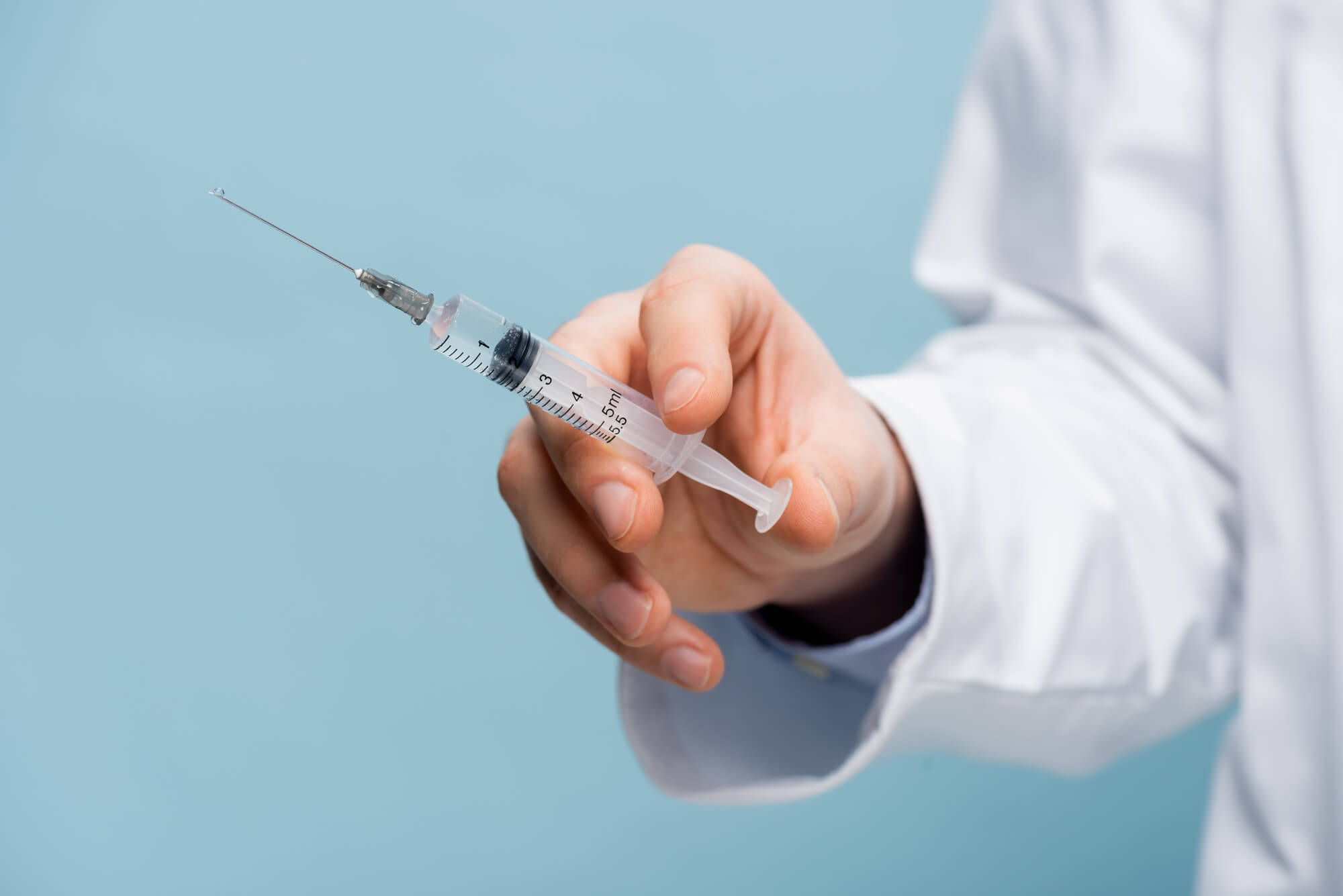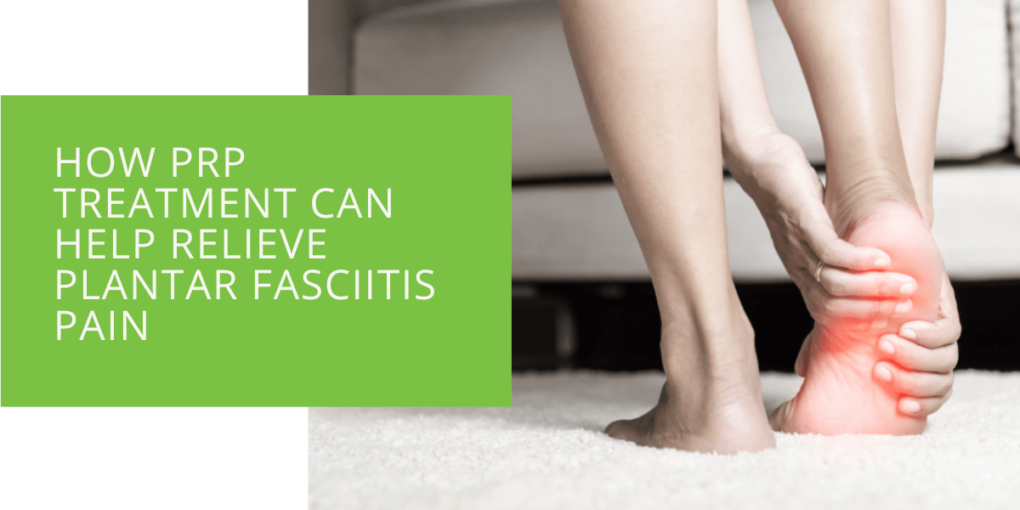How PRP Treatment Can Help Relieve Plantar Fasciitis Pain
If you're among the many people suffering from plantar fasciitis, you know how debilitating the condition can be. Plantar fasciitis is a common condition that causes pain in the heel and bottom of the foot. While various treatment options are available, PRP therapy is gaining in popularity. In this article, we'll look closer at PRP therapy, how it works, and how it can help relieve plantar fasciitis pain.
What is PRP Treatment?
PRP stands for Platelet-Rich Plasma. This treatment involves using a patient's blood to promote healing and tissue regeneration. During the PRP procedure, a small amount of blood is taken from the patient and placed in a centrifuge. The centrifuge separates the platelets and plasma from the rest of the blood, creating a concentrated platelet-rich plasma solution. This PRP is injected into the patient's soft tissue or affected area.
Benefits of PRP Treatment for Plantar Fasciitis
PRP therapy has gained popularity as a treatment for chronic pain and soft tissue injuries, such as plantar fasciitis. The benefits of PRP therapy for plantar fasciitis include the following:
- Reduced pain and inflammation: PRP injections can reduce inflammation and pain in the affected area by delivering growth factors directly to the damaged tissue.
- Increased healing and tissue regeneration: The growth factors in PRP can promote tissue regeneration and help the body heal damaged tissue more quickly.
- Lower risk of complications: PRP therapy is a minimally invasive treatment option that uses a patient's blood, reducing the risk of complications associated with other treatments.
- Shorter recovery time: PRP injections have a shorter recovery time than other treatments, such as surgery.

The PRP Treatment Procedure
If you're considering PRP treatment for plantar fasciitis, here's what you can expect during the procedure:
Initial Evaluation by A Podiatrist
Before undergoing PRP therapy, you'll meet with a podiatrist for an initial evaluation. They will examine your foot and ankle to determine if PRP treatment suits you.
Preparation of The PRP Injection
Once your podiatrist has determined you're a good candidate for PRP therapy, they will prepare the injection. This involves taking a small sample of your blood and placing it in a centrifuge to separate the platelets and plasma from the rest of the blood.
Administration of the PRP injection
Once the PRP has been prepared, it will be injected into the affected area using a needle. The entire procedure typically takes less than an hour.
Post-Injection Care
After the injection, your podiatrist will provide instructions for post-injection care. This may include avoiding strenuous activity for a few days and using ice to reduce swelling and pain.

Expected Results of PRP Treatment for Plantar Fasciitis
The results of PRP therapy for plantar fasciitis can vary depending on the severity of the condition and the individual patient. However, some common results of PRP therapy for plantar fasciitis include the following:
- Pain relief: Many patients report a reduction in pain after PRP treatment.
- Improved mobility: PRP therapy can help improve the range of motion and mobility in the affected area.
- Reduced inflammation: The growth factors in PRP injections can reduce inflammation in the affected area.
- Increased healing and tissue regeneration: PRP therapy can promote healing and tissue regeneration, leading to a faster recovery.
Is PRP Treatment Right for You?
While PRP therapy is effective for many patients with plantar fasciitis, it may not be the right treatment for everyone. Factors to consider before undergoing PRP treatment include:
- The severity of the condition: PRP therapy may not be appropriate for severe cases of plantar fasciitis.
- Other medical conditions: Patients with certain medical conditions, such as blood disorders, may not be good candidates for PRP therapy.
- Medications: Some medications may interfere with the effectiveness of PRP therapy.
- Cost: PRP therapy can be expensive and not covered by insurance.
- Your doctor's recommendation: The decision to undergo PRP therapy should be made in consultation with your healthcare provider.

Risks and Potential Side Effects of PRP Treatment
As with any medical procedure, PRP therapy carries risks and potential side effects. These may include:
- Infection at the injection site
- Pain or swelling at the injection site
- Allergic reaction to the injection
- Bleeding or bruising at the injection site
While these risks are rare, knowing them before undergoing PRP therapy is important.
Conclusion
Plantar fasciitis can be painful and debilitating, but treatment options are available. PRP therapy is a minimally invasive treatment option that can help reduce pain and inflammation and promote healing. If you're considering PRP therapy for plantar fasciitis, consult a qualified podiatrist to determine if it's the right treatment option for you. With the right treatment, you can recover from plantar fasciitis and return to the activities you enjoy.
FAQ
Does PRP work for plantar fasciitis?
Yes, PRP therapy is effective in treating plantar fasciitis in many patients. It can help reduce pain and inflammation and promote healing and tissue regeneration.
How many PRP injections are needed for plantar fasciitis?
The number of PRP injections needed for plantar fasciitis can vary depending on the severity of the condition and the individual patient. However, most patients will require at least one injection, and some may require multiple injections over weeks or months.
How long does it take for PRP to work on plantar fasciitis?
The timeframe for PRP therapy starting to work on plantar fasciitis can vary depending on the patient. Some patients may start to see results within a few days, while others may take a few weeks or longer to experience the full benefits of PRP therapy.
Is PRP better than steroids in plantar fasciitis?
While PRP therapy and steroid injections effectively treat plantar fasciitis, evidence suggests PRP therapy may have longer-lasting effects than steroid injections. Additionally, steroid injections can have side effects, such as tissue weakening, whereas PRP therapy uses the body's healing mechanisms to promote tissue regeneration. However, the best treatment option for each patient will depend on various factors and should be determined in consultation with a qualified healthcare provider.

